You can contact LEARNZ, part of CORE Education, at:
Postal Address:
PO Box 13 678,
Christchurch 8141,
New Zealand

Watch Shelley's diary cam video.
Kia ora koutou,
Once upon a time building roads required heavy machinery and not much thought about the environment, now people expect more care and consultation. A big road project like the Waterview Connection has to be carefully designed not only to make sure it meets the future needs of drivers but also that the environment isn’t damaged. Today you will see how urban design has helped make this happen.
Urban design
Before heading out on site you met with Al Rigby, a landscape architect, and spoke with Banks Avenue School during the audioconference. These Christchurch students had clearly done their homework and already knew a lot about the Waterview Connection project. They were interested in how people have decided what designs to use on the project. Al talked about how designers had talked to people living in the area to gain ideas and had also looked at the features of the area to get inspiration. The tunnels are in an area of volcanic rock. This basalt rock comes from an old eruption of Mount Albert so designers have made concrete barriers the same colours as these rocks. The shapes of walls and even the vent stacks also match the angles of the local rocks and hills. This helps to make the whole project fit in with the natural environment and look good too! You can listen to the audioconference recording to find out more.
What’s new at Waterview?
Al wanted to take you out to the Waterview playground at the northern end of the site. This playground is a bit different to most as it has many unique features. You were met by some local school students who have helped design the playground. Waterview School students were asked to imagine what they would want in a playground and many of their ideas have become a reality. It was really neat to see how they have helped create something for the community. This playground has everything from water features to climbing walls, slides and fruit trees. You can watch the video to find out more about the playground.
Looking after the locals
As well as a playground other recreational facilities are also being added such as parks, shared pathways, volleyball courts, skate parks and a BMX park. Al showed you where the skate and BMX parks are being built. Lots of people have had input into these projects. Expert skaters and BMX riders have helped with the design and people living in the area have been able to contribute their own ideas. Watch the video to find out more.
Te Whitinga
On the drive back to the site office at the southern end of the project Al pointed out lots of the design features that he has been working on. The Hendon footbridge stood out as you neared the tunnel entrance. Al introduced you to Eva Brosius, a Site Engineer who has been working on this bridge. Eva managed to organise permission for you to walk out onto the nearly completed bridge. The archway and curve of the bridge was really impressive. This bridge is part of the shared pathway that allows people to bike or walk from one side of the motorway to the other. Eva spoke about the motorway dividing the suburb in two so the bridge offers a link. Careful design and construction was needed to fit the huge steel arch and cables have been fitted to hold the arch in place. You can find out more about the engineering behind this bridge by watching the video. In the last few hours it has been decided that the bridge will be renamed as Te Whitinga, meaning the crossing, which I thought was really appropriate.
Enhancing the environment
From Te Whitinga you can see the realigned Oakley Creek. This creek used to flow through where the new road is now, so it had to be shifted. The creek was in a concrete channel but rather than just diverting it away from the new road it has been ‘naturalised’. Hannah Giess is an Environmental Scientist and she has helped make Oakley Creek a better place for wildlife. A lot of work has been done to replicate a natural river. Eels from the old stream were caught and shifted to the new stream and thousands of natives have been planted. Copper skinks have also been shifted before the road was constructed. Hannah talked about how much she loves her work as she can help improve urban areas but also make sure that the impact on plants and animals is minimised. Watch the video about this.
Tomorrow you will take a guided drive through the tunnel and find out more about the impact that the Waterview Connection will have on Auckland.
See you then,
Shelley the LEARNZ field trip teacher.

Shelley and Al talk to Banks Avenue School during today's audioconference. Image: LEARNZ.

This is the new Waterview Playground. How did students contribute to this playground? Image: LEARNZ
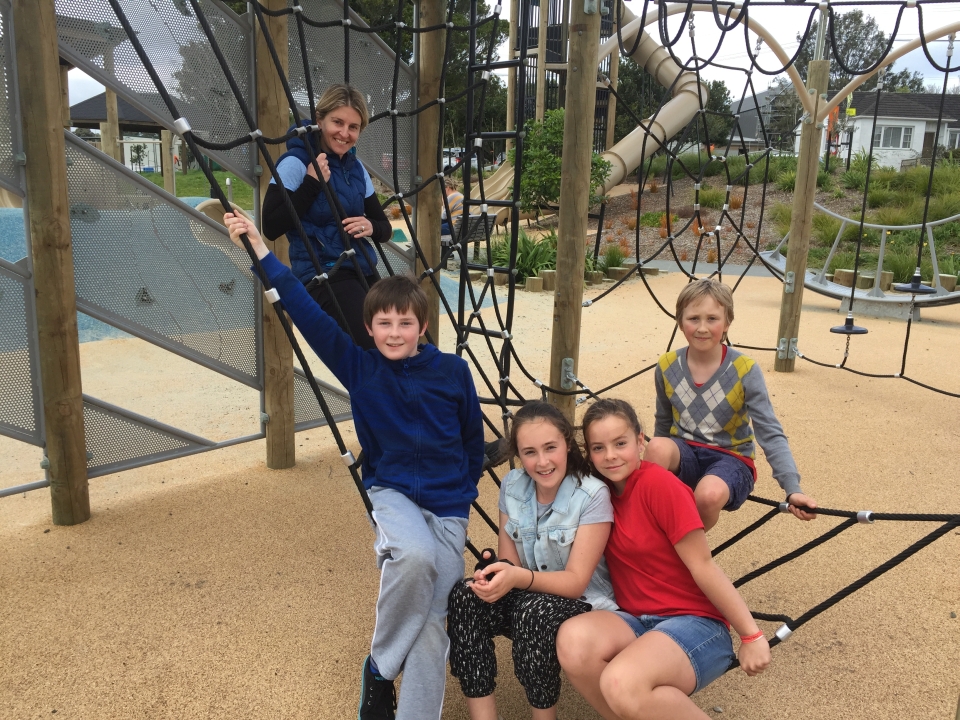
Waterview School students show Shelley the new playground which they helped design. Image: LEARNZ.
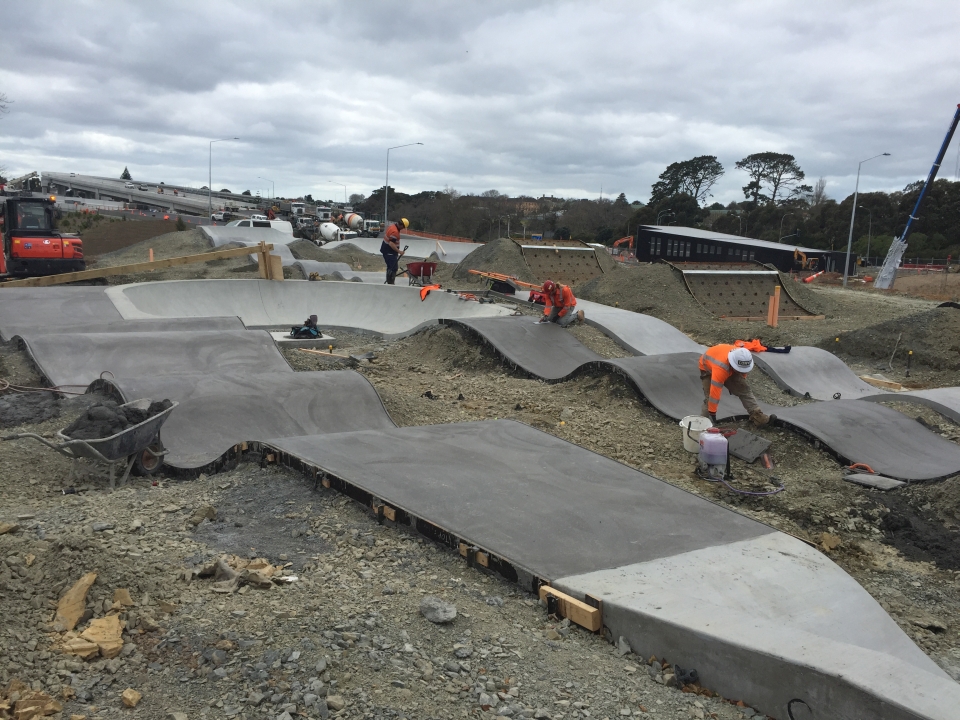
A BMX track is being built as part of the Waterview Connection Project. Image: LEARNZ.

A skate park is also being built at Waterview. Where did ideas for this park come from? Image: LEARNZ.
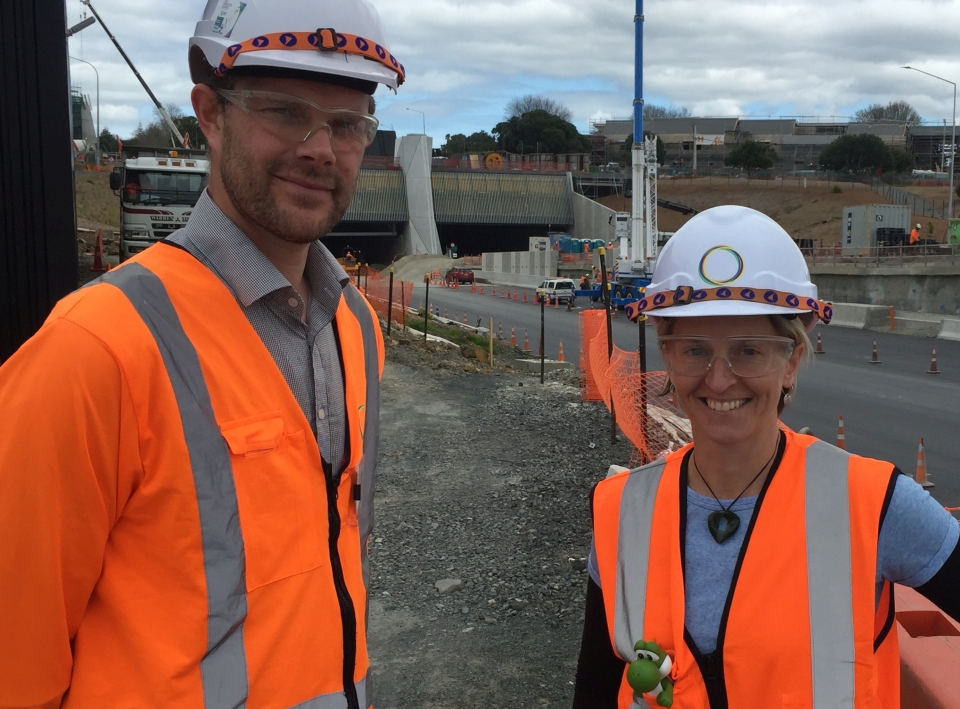
Al explains some of the design features that can be seen at the northern end of the tunnels. From where did the designers get their ideas? Image: LEARNZ.
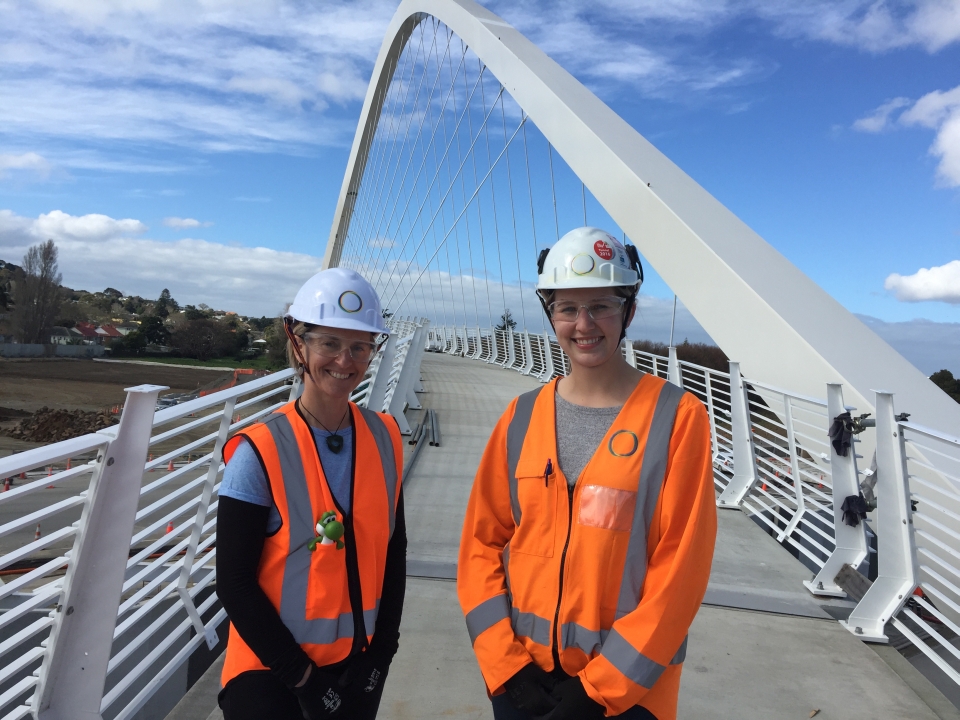
Shelley and Eva take a closer look at Te Whitinga. Why do you think this bridge has been constructed?

This is the old Oakley Creek before it enters the Waterview Connection site. Image: LEARNZ.
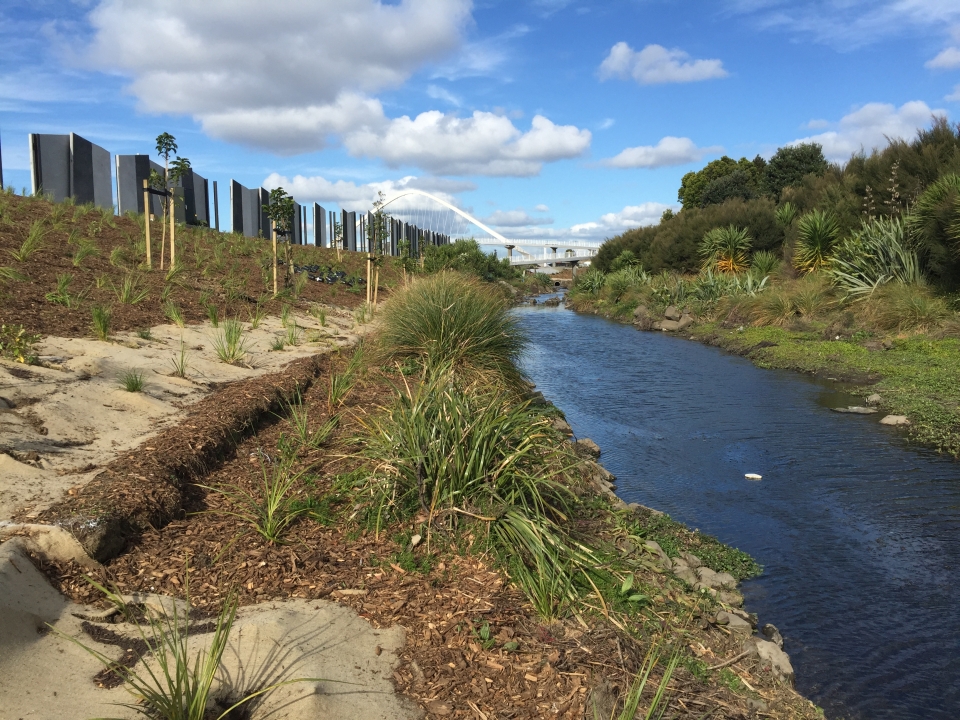
This is the newly realigned Oakley Creek at the Waterview Connection site. What differences can you see between the old and new creeks? Image: LEARNZ.